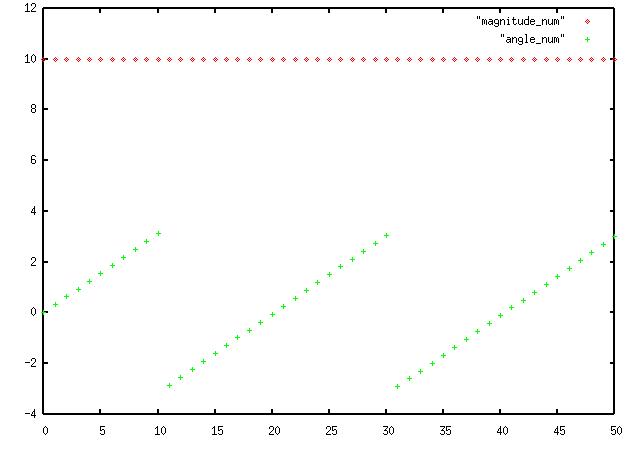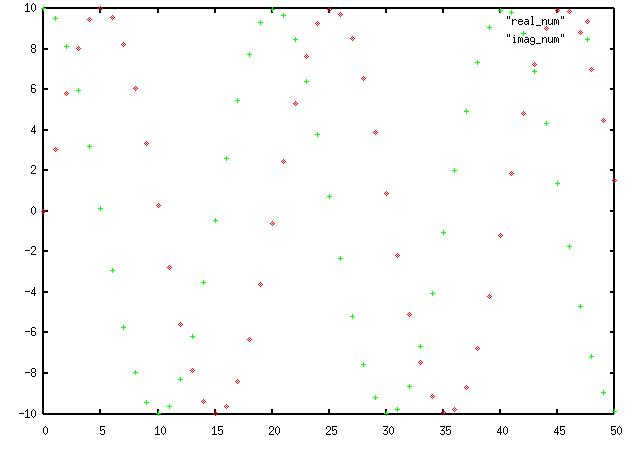Complex Conversions
Modules:
- complex_to_float()
- complex_to_real()
- complex_to_imag()
- complex_to_mag()
- complex_to_arg()
for converting a complex signal to seperate real & imaginary float, just real,
just imaginary, magnitude and phase angle.
Example usage:
convert = complex_to_float()
instantiates a complex_to_float allowing you to break a complex input
into imaginary on output port 0 and real on output port 1.
Example:
This creates a complex sin with with a frequency of 396.15Khz, amplitude 10 and zero offset, obtains the
magnitude and angle and writes them to disk files "magnitude" and "angle".
sampling_freq = 8e6
fg = gr.flow_graph ()
src0 = gr.sig_source_c ( sampling_freq, gr.GR_SIN_WAVE, 396.15e3, 10, 0)
c2m = gr.complex_to_mag ()
c2a = gr.complex_to_arg ()
dst1 = gr.file_sink (gr.sizeof_float, "magnitude")
dst2 = gr.file_sink (gr.sizeof_float, "angle")
fg.connect (src0, c2m)
fg.connect (c2m, dst1)
fg.connect (src0, c2a)
fg.connect (c2a, dst2)
and here is the output:

as you can see the magnitude stays a steady 10, while the angle continuously runs from zero to pi (3.14159), then -pi to zero, etc.
Example:
This uses the same sin wave sent to complex_to_float(), the output of port 0 is
sent to a disk file named "imag", and port 1 to a file named "real".
sampling_freq = 8e6
fg = gr.flow_graph ()
src0 = gr.sig_source_c ( sampling_freq, gr.GR_SIN_WAVE, 396.15e3, 10, 0)
c2f = gr.complex_to_float ()
dst1 = gr.file_sink (gr.sizeof_float, "imag")
dst2 = gr.file_sink (gr.sizeof_float, "real")
fg.connect ( src0, c2f )
fg.connect ( (c2f, 0), dst1 )
fg.connect ( (c2f, 1), dst2 )
while creates this output:

where you can see real, the red dots, is indeed a sine and imaginary a cosine.

